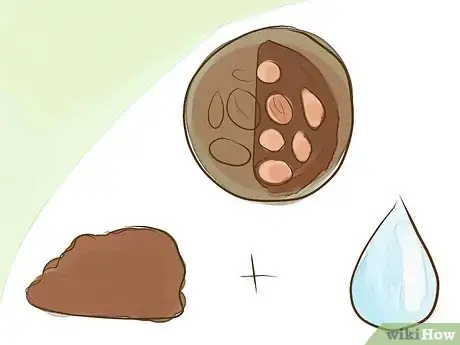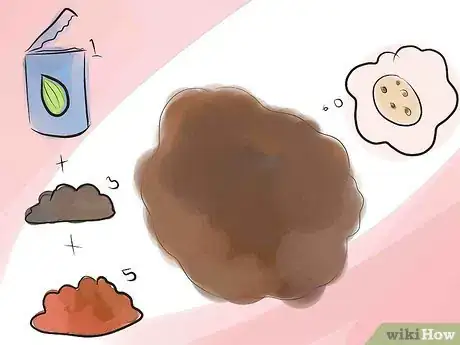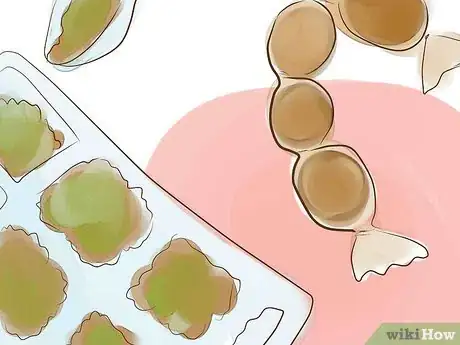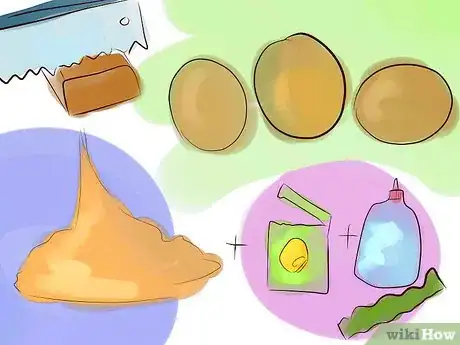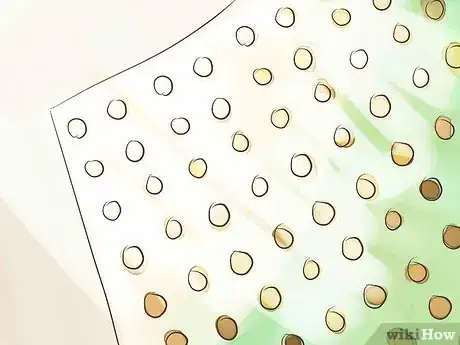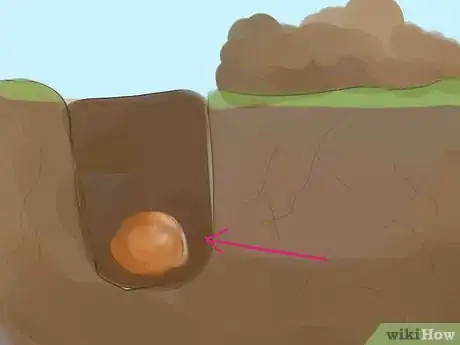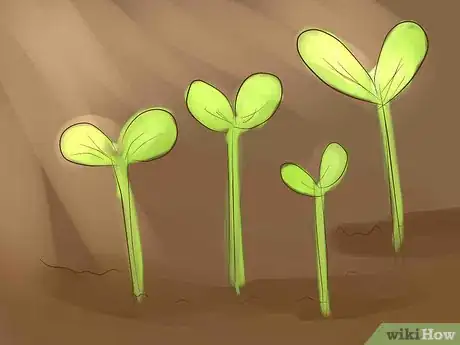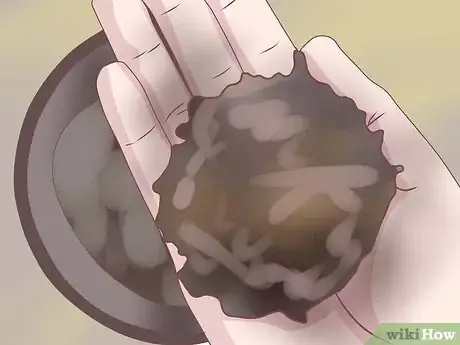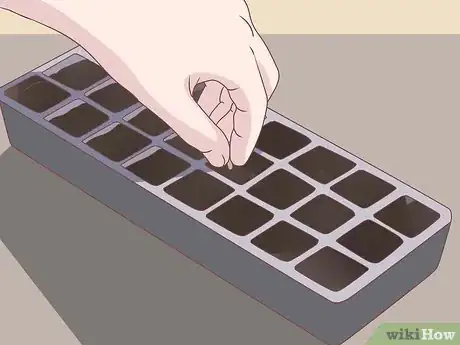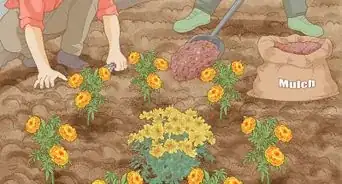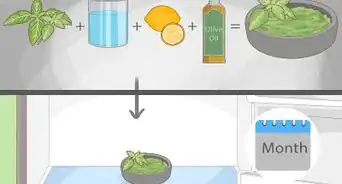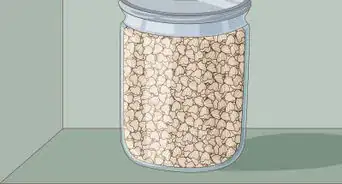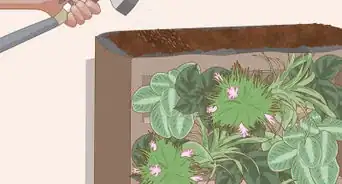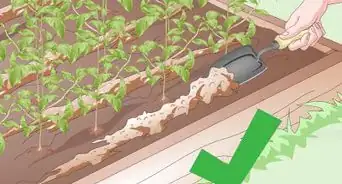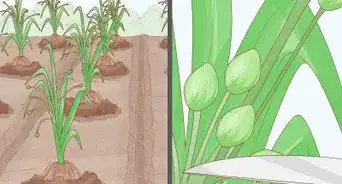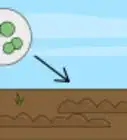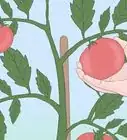wikiHow is a “wiki,” similar to Wikipedia, which means that many of our articles are co-written by multiple authors. To create this article, 19 people, some anonymous, worked to edit and improve it over time.
This article has been viewed 215,926 times.
Learn more...
Seed bombs (also known as seed balls) aren't always the domain of guerilla gardeners – they're actually a great way to propagate seeds, especially on a large scale or in poor soils. Using richer soil balls gives the seeds a head start and reduces the need for chemical fertilizers. Here's a simple way to go.
Steps
-
1Buy or harvest your seeds. Buy or harvest quality seeds that you know will grow well over a large area or in poor soils, without needing too much attention. Don't choose any plants that will cause ecological or other damage such as weeds, invasive plants, or ones that have destructive root systems. If you're not sure, find out which plants are problem plants for your area or region; don't just rely on general information because some plants might be ideal in their local environment but a rampant pest in yours.
- Consider the entire habitat when selecting the seeds. Do you want seeds that will create an entire new habitat or do you just want seeds that will provide a few varieties of crops or plants? Heather C. Flores suggests that you can use anywhere from one variety of seeds to one hundred different kinds.[1]
-
2Soak the seeds for an hour or overnight in a warm, but not boiling, weak seaweed solution or compost tea. Discard any seeds that still float – seeds that float are mostly broken or damaged seeds that won't grow or that will have weak genetic stock.[2]Advertisement
-
3Prepare the seed bombs. There are four main ways to go about making the seed balls:
- Method 1. Purchase or secure some rich loam soil, or other clay type soils that can form a stable ball. The soil should be suitable for plants to grow in; make sure it's not too acidic. Shape the pure loam into a golf-sized shape ball using water to make it pliable and insert the seeds into each ball as you go, or sprinkle seeds in prior to shaping balls if easier.
- Method 2: Use semi-dry, living compost (not sterilised) and powdered red clay.[3] Mix one part seed mix, three parts compost, and five parts clay. Shape into a round ball with your hands, adding enough water to make it pliable. It should have the consistency of cookie dough.
- Method 3. Alternatively, save up small biodegradable cardboard cartons, such as egg cartons or find biodegradable netting, such as old cotton stockings. Fill the egg cartons with the preferred soil and seed mix as above methods outline. Pinch the tips over so that the contents won't fall out. With stockings, you can fill them with a seed and soil mix, then twist, tie and cut them out much like you'd do if you were making sausages.
- Method 4. Mix sawdust on a ratio of 5 parts sawdust to 1 part seed with a rapidly biodegradable, non toxic and preferably food safe glue and a small amount of seaweed extract. The mix should not be wet, but moist enough to form a ball. It's better to make this version in small batches.
-
4
-
5Plant the seed bombs. If you have a plot with rows already dug for planting, install a ball every few feet (meters), (or as recommended by the seed producer), then cover over with existing soil.
- If you are looking to re-vegetate open space with grass or tree seeds, just throwing the seed balls will create a more random, realistic landscape, then bury them sufficiently to retain the moisture for the seed.
- If you'd rather store the seed bombs for a bit, keep them in a cool, dark, and dry place for no longer than several weeks.[5] It is best to use them when fresh though, as the seeds might begin to sprout!
-
6Watch for the growth. If made correctly, the seedling will be visible within 2-3 weeks, or quicker in warmer conditions. The process doesn't really speed up germination time dramatically, but when the seedling starts growing it has ample nutrients directly at its roots so will grow quicker and more healthily.
Freezer bombs
-
1Find good potting soil. Moisten heavily.
-
2Fill individual spots in an ice cube tray half full of wet dirt. Place 1-2-3 seeds in the middle. Cover to the top with very wet dirt.
-
3Freeze to as low a temperature as your freezer can be set for.
-
4When frozen, take out "dirt/seed cubes". Dip into an organic fertilizer to lightly coat the cube. Refreeze until very cold.
-
5Take out of the freezer. Put into a small cooler with some dry ice.
-
6Go out and throw the cubes to places you want your plants to grow.
Community Q&A
-
QuestionWhat if you don't have an ice cube tray ?
 Community AnswerThey don't cost much and a quick visit to the supermarket or thrift store will see you with one for probably under $2. You could ask a neighbor for a spare they don't want -- many people accumulate ice cube trays. Or, use a muffin or cupcake pan, resealable snack-size bags or yogurt pottles.
Community AnswerThey don't cost much and a quick visit to the supermarket or thrift store will see you with one for probably under $2. You could ask a neighbor for a spare they don't want -- many people accumulate ice cube trays. Or, use a muffin or cupcake pan, resealable snack-size bags or yogurt pottles. -
QuestionHow many seeds per bomb?
 Salifu JosephCommunity AnswerYou should put one seed in each individual ball. This is because the ball will break, and the roots of the plant will grow into the ground.
Salifu JosephCommunity AnswerYou should put one seed in each individual ball. This is because the ball will break, and the roots of the plant will grow into the ground.
Warnings
- If you use sawdust, check to make sure it is not from exotic, possibly toxic woods or pressure treated wood.⧼thumbs_response⧽
- Don't do anything illegal or unethical. Many weeds have devastated landscapes that were originally planted by keen gardeners.⧼thumbs_response⧽
- Don't use pure compost as the sole constituent of a seed bomb; it is too strong on its own.⧼thumbs_response⧽
- Seed bombing is not always practical in dry, hot climates as the seed ball will dry or turn to dust without providing adequate long term moisture for the plant to live.⧼thumbs_response⧽
- Seed bombing should not be done on land you don't own without permission.⧼thumbs_response⧽
Things You'll Need
- Appropriate soil mix
- Container for mixing soil
- Container for shaping seed bombs (optional)
- Drying area with tarpaulin or newspaper
- Planting area for using seed bombs
References
- ↑ Heather C Flores, Food Not Lawns, p. 111, (2006), ISBN 978-1-933392-07-3
- ↑ Heather C Flores, Food Not Lawns, p. 152, (2006), ISBN 978-1-933392-07-3
- ↑ Heather C Flores, Food Not Lawns, p. 152, (2006), ISBN 978-1-933392-07-3
- ↑ Heather C Flores, Food Not Lawns, p. 111, (2006), ISBN 978-1-933392-07-3
- ↑ Heather C Flores, Food Not Lawns, p. 111, (2006), ISBN 978-1-933392-07-3
About This Article
To make a seed bomb, buy some rich loam or non-acidic clay soil as well as some quality seeds from your local nursery or garden center. Soak the seeds overnight in a compost tea or weak seaweed solution, discarding any seeds that float. The next day, add a little water to your soil so that it becomes pliable, and then divide the soil into golf ball sized balls. Press the seeds into the balls of soil and let them air dry for 24 hours before planting. For other methods of making seed bombs, including freezer seed bombs, keep reading!


